
Do you have a question about the Sony Bravia KDL-50W828B and is the answer not in the manual?
| Smart modes | Cinema, Game, Photo, Sports |
|---|---|
| Screen shape | Flat |
| Response time | - ms |
| Display diagonal | 50 \ |
| Display brightness | - cd/m² |
| Native aspect ratio | 16:9 |
| LED backlighting type | - |
| Supported video modes | 1080i, 1080p, 480i, 480p, 540p, 576i, 576p, 720i, 720p |
| Display diagonal (metric) | 126 cm |
| Screen format adjustments | 14:9, Zoom |
| Motion interpolation frequency | 800 Hz |
| Supported graphics resolutions | 1920 x 1080 (HD 1080) |
| Motion interpolation technology | Motionflow XR |
| 3D | Yes |
| 3D type | Active |
| USB ports quantity | 1 |
| 3D glasses quantity | 2 |
| Supported file systems | exFAT, FAT16, FAT32, NTFS |
| Annual energy consumption | 71 kWh |
| Lifestyle apps | Skype |
| Audio formats supported | 3GPP, AAC, ASF, HE-AAC, LPCM, MP1, MP2, MP3, MP4, WAV, WMA |
| Image formats supported | JPG, MPO, RAW |
| Video formats supported | AVC, H.264, M-JPEG, MKV, MOV, MP4, MPEG1, MPEG2, MPEG4, RV, VP8, WEBM, XVID |
| Tuner type | Analog & digital |
| Analog signal format system | NTSC, NTSC 3.58, NTSC 4.43, PAL, SECAM |
| Digital signal format system | DVB-C, DVB-S, DVB-S2, DVB-T, DVB-T2 |
| Sound modes | Music |
| Audio system | NICAM/A2 |
| Audio decoders | Dolby Digital, Dolby Digital Plus, Dolby Digital Pulse |
| RMS rated power | 16 W |
| PC in (D-Sub) | No |
| DVI-D ports quantity | 0 |
| USB 2.0 ports quantity | USB 2.0 ports have a data transmission speed of 480 Mbps, and are backwards compatible with USB 1.1 ports. You can connect all kinds of peripheral devices to them. |
| Browser supported | Opera |
| Product color | Black |
| Mercury content | 0 mg |
| Power consumption (standby) | 0.45 W |
| Power consumption (typical) | 51 W |
| Package depth | 165 mm |
| Package width | 1210 mm |
| Package height | 759 mm |
| Cables included | AC |
| Depth (with stand) | 230 mm |
|---|---|
| Height (with stand) | 694 mm |
| Weight (with stand) | 15200 g |
| Depth (without stand) | 77 mm |
| Width (without stand) | 1112 mm |
| Height (without stand) | 661 mm |
| Weight (without stand) | 14000 g |
Learn to operate the TV using the IR and Touchpad remote controls.
How to select TV channels using various methods like Discover, Home Menu, or number buttons.
Find programs and view weekly guides for current and future broadcasts.
Connect and set up USB HDD for recording digital broadcasts.
Connect audio systems via HDMI or optical audio for enhanced sound.
Enable and configure BRAVIA Sync for controlling connected devices.
Set up a wireless connection to access the internet and home network.
Set up a wired LAN connection for internet and home network access.
Play media files stored on a PC connected to the same home network.
Control the TV using the TV SideView application on a mobile device.
Display smartphone screen content on the TV wirelessly using NFC.
Display mobile device screens on the TV using Miracast technology.
Choose picture modes like Vivid, Standard, or Cinema for optimal viewing.
Customize sound settings like equalizer, volume, and surround effects.
Automatically scan and store available digital TV channels.
Automatically scan and store available analogue TV channels.
Reset all TV settings to their original factory defaults.
Check for and install TV software updates for new features and fixes.
Set a 4-digit password for parental lock settings.
Lock events unsuitable for specific age limits using parental controls.
Run diagnostic tests to check if the TV is working properly.
Troubleshoot issues related to the TV turning on or off automatically.
Resolve issues with picture quality, screen flickering, or black bands.
Troubleshoot problems with antenna connection, signal quality, and channel tuning.
Troubleshoot issues with no sound, audio noise, or distorted sound.
Resolve problems with connected devices not displaying or functioning correctly.
Troubleshoot issues with USB HDD connection, recording, or playback.
Interpret test results to diagnose network connection problems.
Troubleshoot issues with wireless streaming, app access, or internet connectivity.
Resolve issues with connecting to servers, Wi-Fi Direct, or media playback.
Troubleshoot problems with the TV's remote control not operating.

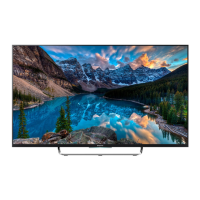



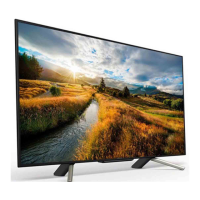
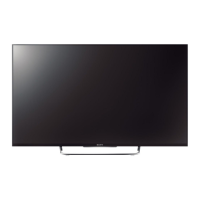


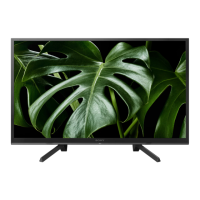
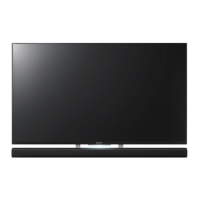
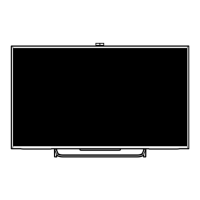
